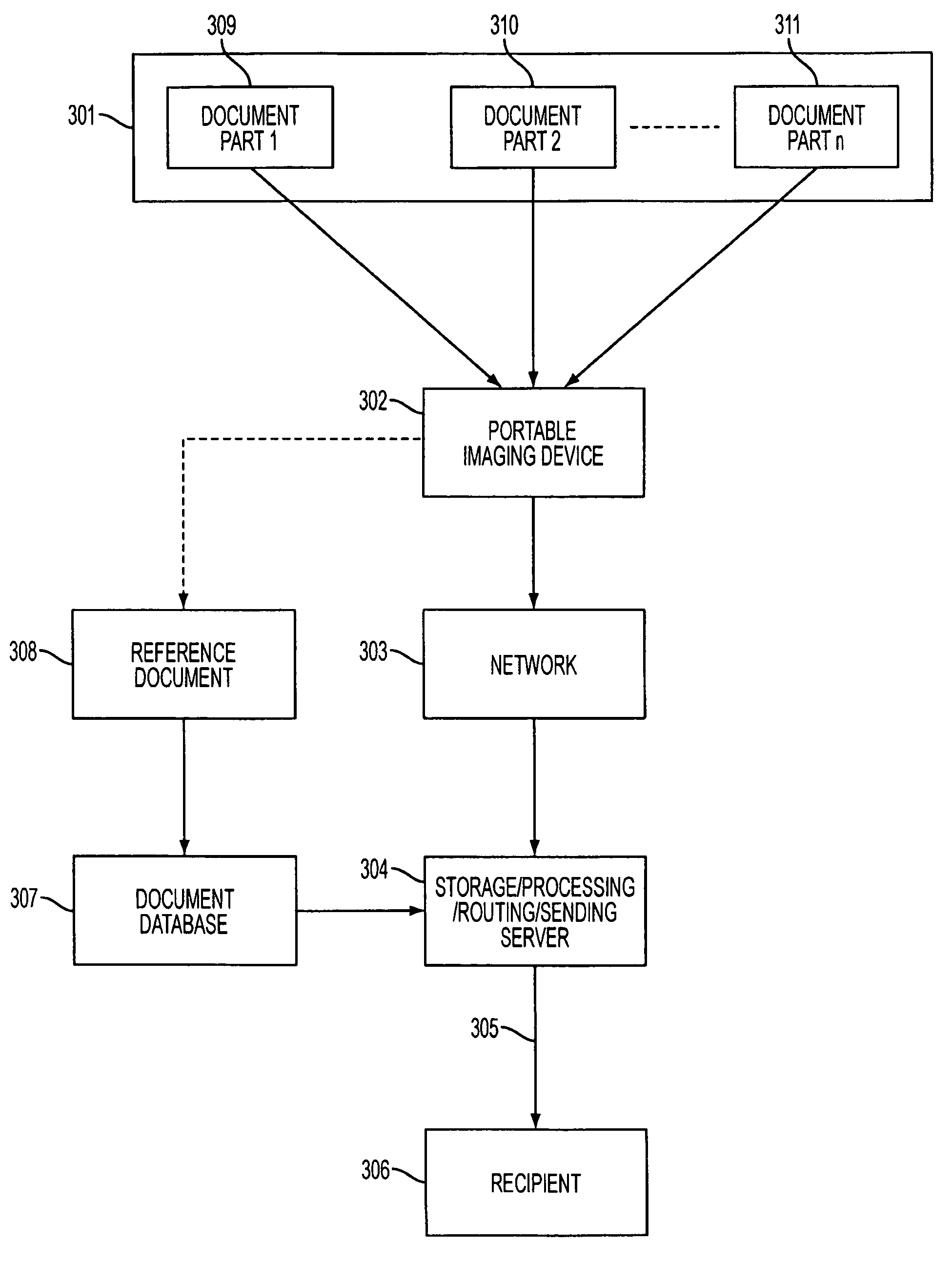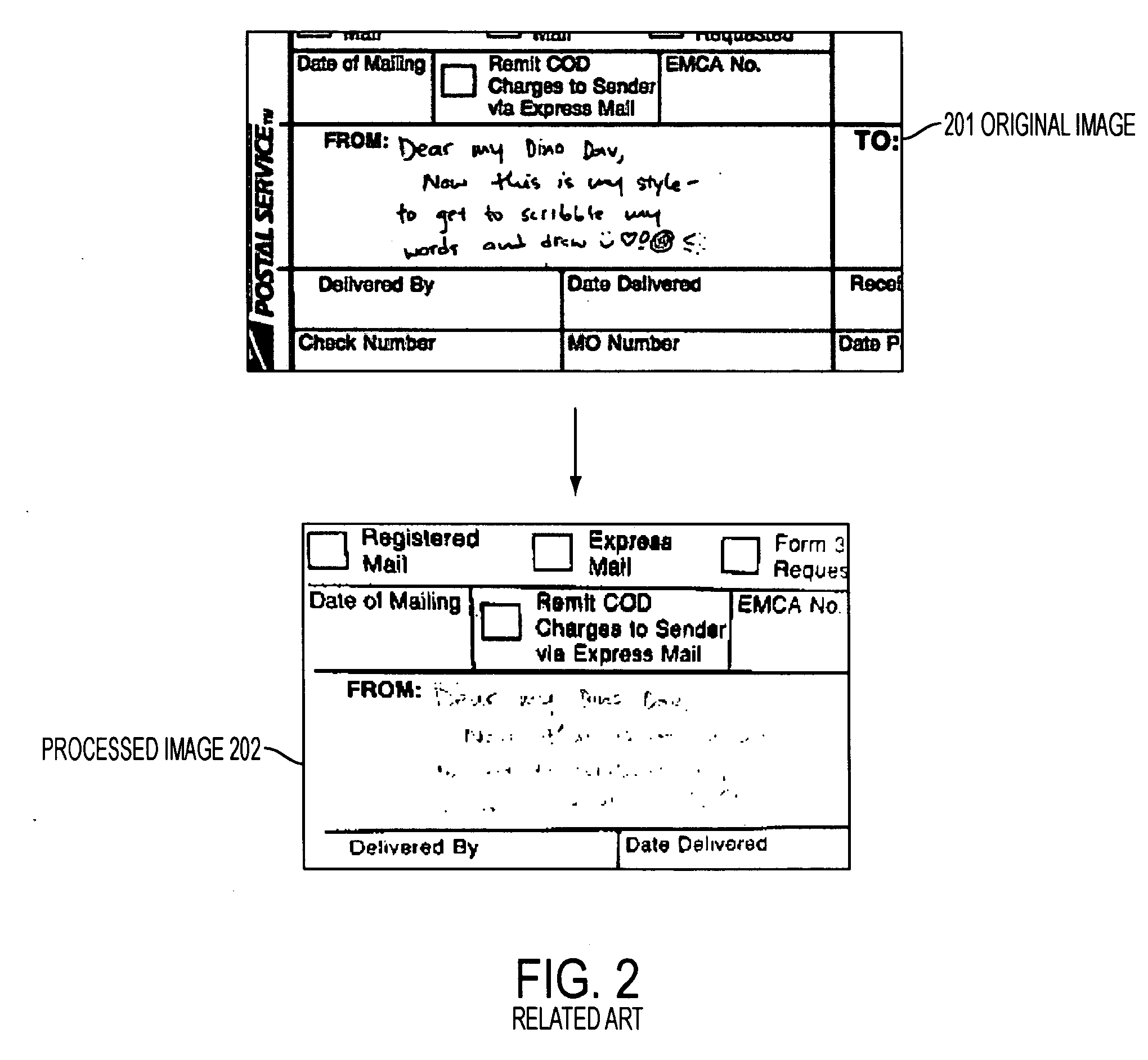These existing systems provide a cost effective, reliable solution to the problem of scanning documents, but these systems require special hardware that is costly, and additional hardware that is both costly and not very portable (that is, hardware which must be carried by the user).
Thus, they cannot serve for the imaging of glossy paper, of plastic documents, or of other displays that are not non-glossy paper.
They are also not suited for the imaging of non planar objects.
The raw images of documents taken by a
camera phone are typically not useful for sending via fax, for archiving, for reading, or for other similar uses, due primarily to the following effects:
As a result of limited imaging device resolution, physical distance limitations, and imaging angles, the capture of a readable image of a full one page document in a single photo is very difficult.
(It may be noted, however, with other imaging devices, notably some scanners, fax machines, and
high resolution cameras for taking fixed images, multiple images are typically not required, but this equipment is expensive, often not easily portable, and generally incapable of dealing with quality issues where the document to be captured is not of high quality, or is not on glossy paper, or suffers other optical defects, as discussed above.)
The resolution limitation of mobile devices is a result of both the
imaging equipment itself, and of the network and protocol limitations.
For example, a 3G
mobile phone can have a multi-megapixel camera, yet in a video call the images in the captured video clip are limited to a resolution of 176 by 144 pixels due to the
video transmission protocol.
Since there is no fixed imaging angle common to all still images of the parts of the full document, the multiple still images suffer from variable skewing, scaling, rotation and other effects of projective geometry.
Hence, these still images cannot be simply “put together” or printed conveniently using the technologies commonly available for regular planar document such as faxes.
The still images of the full document or parts of it are subject to several optical effects and imaging degradations.
These optical effects and imaging degradations affect the final quality of the still images of the parts of the full document, making the documents virtually useless for many of the purposes documents typically serve.
In addition to all limitations applying to still images, video clips suffer from blocking artifacts, varying compression between frames, varying imaging conditions between frames, lower resolution, frame registration problems and a higher rate of erroneous image data due to communication errors.
These images of parts of the full document cannot be faxed because of a
large dynamic range of imaging conditions within each image, and also between the images.
Furthermore, without considerable
gray level reduction operations the images will not be suitable for faxing.
To read hand-printed writing in these images of parts of the full document even on a high quality computer screen, is very difficult, mainly due to
dynamic range of the imaging device, imaging device resolution, compression artifacts, and
color contrast of the text versus the background.
These images of parts of the full document cannot be stored and later retrieved in a uniform manner since several images of the same document may contain duplicities and some parts of the document may be missing from the complete image set.
The
image processing products outlined above suffer from certain fundamental limitations that make their widespread adoption problematic and doubtful.
It is hard to automatically differentiate between the text and the background without
prior information.
Therefore in some cases the resulting image is not legible and / or the background contains many details resulting from incorrect segmentation between background and text.
Since it is hard to automatically estimate the imaging angles of the document in a given image, the resulting processed document may contain geometric distortions altering the reading experience of the end-user.
The automatic registration of multiple images / frames with partial overlap is technically difficult.
These conditions are not fulfilled when
document imaging is performed by a portable imaging device.
Furthermore, there is no guarantee that the visual overlap between subsequent images will contain sufficient information to uniquely combine the images in the right way.
 Login to View More
Login to View More  Login to View More
Login to View More 


